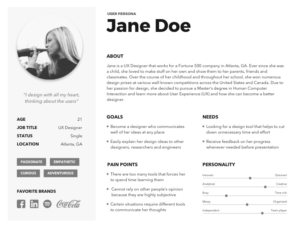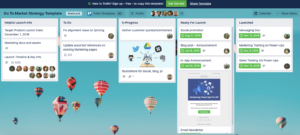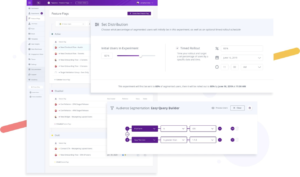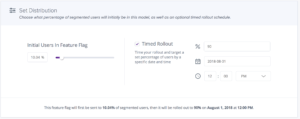7 Strategies for Building a Concrete Product Development Process

Developing a truly great product isn’t easy—of the 30,000 new products that launch every year, 95% fail. There’s a lot of preparation and work that goes into making something truly valuable for your customers. To be successful, your team needs to come up with an idea that solves a real problem for consumers in your market and have a clear sense of how that product impacts important business goals.
Creating a well-defined process for developing new products helps your team understand what’s required of them and reduces your risk of failure. Whenever your team gathers data, comes up with a plan, or works to create your product, the product development process will show them the best path forward.
A great product development process also ensures that your team is connected with larger project and business goals as they go about their work. It creates repeatable processes for everyone, making it easier to accomplish tasks, build features, and create the best possible product experience for your customers.
When you take a strategic approach to product development, you’re setting your team up to win. And here’s how.
1. Define the Product Development Process for Your Team
There are lots of moving parts to the product development process—from ideation to execution, promotion, and release. Building out your team’s product development process starts by defining what needs to happen at each stage. When you understand how each stage flows into the next, it’s easy to guide your team through important milestones along the way.
The seven stages of your product development process are:
- Ideation: This is where you come up with your product concept or idea. This is the most nebulous step of the product development process, so you have the most freedom to act on intuition and personal knowledge alone. Just make sure you document every idea—even a half-formed concept can grow into something of value over time.
- Validation: As you come up with ideas, find ways to recognize which ones have the most potential impact on your customers and your business. The validation stage is where you use market research and user interviews to nail down exactly which idea you should focus on as you move forward.
- Planning: Once you’ve settled on a specific product idea, create a plan for how to build it. Planning takes all the work you did during ideation and validation and codifies it for your team. It’s where you define what success looks like for your product, set metrics to measure your progress, and clarify how you’ll get it done.
- Development: With your plan in place, it’s time to move forward with actually executing on the work to build your product. This is where your team comes together to work through individual tasks, execute on your product development plan, and start thinking about what will happen when it’s released to the market.
- User Testing: Before you release your product to the market, make sure to test it with actual users. This kind of testing and experimentation is an opportunity to ensure your team has created something truly valuable for customers. User testing feedback also helps you identify potential bugs before they impact your release.
- Release: This is the point where all your time and hard work come together to launch the product to the public. The release experience has a direct impact on the perception of your product as well as initial engagement, so it’s important you get it right.
- Analysis: After you’ve released the product and have real people using it, analyze how that experience stacks up against your overall product plan. Each product release is an opportunity to learn more about your customers and how the product development process has made an impact on your business goals.
Having a clear understanding of each stage of product development makes it easier to move through the process as seamlessly and painlessly as possible.
2. Define User Personas to Focus Your Ideas
There is a lot of refining that needs to happen throughout ideation. Creating user personas based on current and prospective customers helps narrow down your ideas and provide clarity on specific user problems. The better your user personas are, the easier it will be to create products that solve real problems for people.
Just remember that every type of user has different needs, and each group has a different idea of what’s valuable. An enterprise customer, for example, will be more interested in creating multiple user profiles with varying levels of permissions than a small business owner or team of one.
Your personas should represent each target customer, including their needs, goals, and pain points.
Example user persona via Dribble.
Understanding these preferences and potential opportunities helps your team build products that make a real impact on users’ day-to-day lives. According to Nielsen, 27% of consumers wish more products could make their lives easier—user personas help you do that.
Building products for specific personas also helps you focus your research, development, and release plans for a specific audience. You’ll know how to position your product in the market in a way that showcases its immediate value.
3. Validate Product Ideas With Research
Every product you create needs to add value for customers as well as make an impact on your company’s bottom line. The best way to do this is through exhaustive research of your market, your competitors, and your customers. Having this context helps you build your products faster without sacrificing quality or causing stress for your team.
The research process falls into three core strategies:
Market Research
Market research is how you validate the need for your product. It helps you understand the forces that impact your relationship with users and the infrastructure that supports those forces. Through market research, you’re able to:
- categorize complementary products and services,
- locate industry-specific communities and forums,
- identify opportunities based on user reviews, and
- stay up-to-date with existing customer perceptions.
All this comes together to support the product you’re trying to build. If an idea doesn’t match up with customer expectations of what’s important, you’ll know. And market research data can help stimulate new ideas based on the real needs that exist in the market.
Competitor Analysis
Competitor analysis makes it easier to refine your go-to-market strategy and differentiate your product. You’ll see what other companies in your market are building, how they communicate their product’s value to customers, and how customers react to it.
Use this competitor data to support your market research and identify places where your product can solve a problem in the market that isn’t being addressed.
Customer Discovery
Conduct discovery interviews and dig into existing customer data to drill down on specific customer needs. When you have an idea for a new product, you can use your relationships with current customers to get valuable feedback on what they think of it. Use the feedback from these interviews to refine the type of product you’re trying to build and gain additional context for the types of features that need to be a part of it.
Once you’ve validated an idea, you’ll know that all the hard work and time invested in developing it will make a real impact on your customers as well as your team.
4. Document and Share Your Product Development Plan
Moving through the product development process is more efficient when everyone involved has a clear vision of the path forward. A product development plan defines how each team member contributes to the overarching project, ties in relevant business goals, and acts as a single source of truth for everything related to an upcoming product release.
Documenting everything in a single product development plan makes everyone’s individual contributions visible, which helps increase overall accountability across the team as well. And it communicates specific baseline metrics you want to impact after the product is released.
Let’s say your goal is to build a permissions feature for enterprise accounts, giving larger teams the ability to define who has access to certain features. Here are some example goals and metrics you might set:
- Increase the number of profiles in enterprise accounts by 15% in Q4.
- Decrease inbound feature requests for permissions features to 0.
- Bring in an additional 5% of enterprise MQLs by Q1 of 2021.
Each of these gives your team something to strive for as they work through the process of building out the new product. And once it’s released, you have a clear set of metrics to measure against to track your overall success.
When you create context like this around a project, it helps your team understand the “why” behind any product, making it easier to create something truly valuable for your customers.
5. Set Recurring Meetings to Keep Track of Your Progress
It’s easy for people to disconnect from larger company goals when they’re bogged down with day-to-day work. Having consistent communication not only helps keep everyone on track, but it also gives your team the motivation they need to push through difficult tasks together.
One way to encourage this kind of communication is to set stand-up meetings (SUM) to talk through progress regularly. The specific cadence will depend on your overall product development process and team bandwidth, but many teams do this daily. The goal is to have a short (10–15 minute) meeting at the start of the day to talk through upcoming tasks, share wins, or ask for help.
Each member of your team should spend a few minutes talking about:
- what they completed the previous day,
- what they’re currently working on,
- any bottlenecks or issues they’re having, and
- what they might need help with in the future.
To make communicating these processes more efficient, use a project management tool to highlight how individual tasks contribute to the overall project goals. Trello, Asana, and Jira are viable options. Here’s an example of what that might look like using Trello:
Product launch board example via Trello.
Each team member can see the tasks assigned to them, view other team members’ tasks, and track progress directly. They’ll see how their work impacts other members of the team and identify potential bottlenecks before they create issues.
6. Test the Product With Targeted User Groups
Your current customers are an incredibly valuable source of product feedback. They have an existing relationship with your company, understand how it works, and can provide specific insight into how your new product or feature impacts their experience.
Testing your product in this way also helps you identify potential bugs and make improvements before you roll it out to your entire customer base.
Use feature flags to control which customers to run the test with and how much access they’ll have to the product.
Feature flags via Taplytics.
Creating these tests helps you target specific personas and identify common traits and behaviors to look for in your customer data. And it highlights what’s valuable for specific users, allowing you to create better value propositions for your product marketing material.
After receiving feedback from customers, determine whether or not it makes sense to move forward with release or wait until you’ve resolved any lingering issues. With iterative product development, it’s important to release things quickly, but you don’t want to negatively impact the relationship with current customers if there are bugs.
7. Follow Your Release Management Plan
Releasing your new product is one of the most important parts of the product development process. It’s your opportunity to see the impact of all the hard work your team has put in so far, but it can be a double-edged sword if you’re not careful. A botched launch will drive down customer engagement and negatively impact their experience with your product.
That’s why it’s important to document the release management process. This information ensures that everyone involved understands what’s required of them on launch day and defines who owns which parts of the release process. It’s how you’ll get the product into people’s hands as efficiently as possible, without impacting their experience or putting unnecessary stress on your team.
Try a phased rollout to make it easier to manage the release. Maintaining this kind of control helps you minimize the potential strain on your system and makes it easy to dial back if any issues occur. Even when you test and plan as much as you’ve done so far, unexpected issues can arise when actual customers start using the product.
When so much of the product experience is tied to the initial release, the more control you have over the process, the better.
Build Better With a Clear Product Development Process
When you have a strategic plan for how your team works through the product development process, it’s easier to make a real impact on the customer experience and your business goals. Not only will your team know what’s required of them to take the project over the finish line, but they’ll understand the effects a product will have once it’s finally released.
When you’re building new products or features for customers, this kind of context is what sets a truly great product experience apart from just another release.




